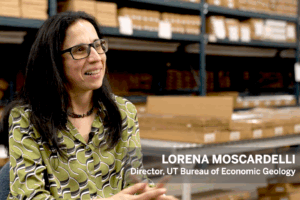Back to 2009 summer reading feature story
AmeriCorps for Community Engagement and Education (ACEE)
1. “The Little Mouse, the Red Ripe Strawberry, and the Big Hungry Bear” by Don and Audrey Wood (1984)
This book is deceptively simple, and a joy to read aloud. Don and Audrey Wood have created a tale of suspense using very few words and their characteristically rich illustrations. There is a very satisfying resolution for everyone, including the narrator. Check out other classics from this author/illustrator team for lots of reading delight (“The Napping House,” “King Bidgood’s in the Bathtub,” “Piggies” and more).
2. “My Little Sister Ate One Hare” by Bill Grossman, illustrated by Kevin Hawkes (1998)
Children love this cumulative counting book of a little sister eating an amazing collection of animals. They are hooked from the opening lines, “My little sister ate one hare. We thought she’d throw up then and there….but she didn’t.” The catchy rhymes and surprise ending are sure to delight child and adult.
3. “Lilly’s Purple Plastic Purse” by Kevin Henkes (1996)
Lilly is the exuberant and lovable star of this story that all children (and parents) can relate to. Lilly loves school and her fabulous teacher Mr. Slinger, until he takes away her “Show and Tell” items so she will pay attention in class. We feel her anguish as she works through her feelings until all is right with Lilly’s world once again. Kevin Henkes has a knack for turning familiar experiences into great stories.
4. “Stick” by Steve Breen (2007)
Stick is a very independent young frog that goes on a flying adventure when he tries to nab a tiny mosquito and lands on a dragonfly instead. The wonderful illustrations tell the story from Stick’s vantage point flying high above the swamp, the city, the countryside and safely home again. The ending will also delight. Who hasn’t wondered what would happen if you swallowed a firefly?
5. “The True Story of the Three Little Pigs!” by Jon Scieszka, illustrated by Lane Smith (1989)
Jon Scieszka is an amazing storyteller who can turn a tale on its head to give us an entirely different point of view. This story is a convincing attempt to portray the Big Bad Wolf as the underdog who was framed! Children (and adults) love this hilarious new take on an old tale. Lane Smith’s unique illustrations add to the story. Be sure to check out Scieszka and Smith’s other collaborations: “Stinky Cheese Man,” “Frog Prince,” “Squids Will Be Squids” and more.
6. “The Parrot Tico Tango/El Loro Tico Tango” by Anna Witte (2005)
This book will take you through the vivid rain forest as a greedy parrot takes colorful fruit from his friends. It’s a great introduction to exotic animals, fruits and colors. Children love the illustrations as well as seeing what happens to Tico Tango as he keeps snatching more fruit. This lovely rhyming book is available in English and Spanish from Barefoot Books. Visit Barefoot Books or contact barefootlibrarian@gmail.com for a full catalog of these beautiful books–many are bilingual and multicultural.
Terri Givens
1. “The Poisonwood Bible” by Barbara Kingsolver (1998)
This many-layered book captures the dynamics of fraught family relationships at its core. However, it also provides an interesting perspective on African development in the post-colonial era. I really enjoyed the women’s perspectives, which give the book its unique voice. It provides lessons not only in the underdevelopment of Africa, but also in the role of women in the second half of the 20th century.
2. “Water for Elephants” by Sara Gruen (2006)
A friend recommended this book as a good summer read, and it surprised me with its careful rendition of the world surrounding the circus tent. Gruen weaves an elegant story about a veterinary student’s time with a traveling circus, and the love story that develops within that brutal world. Told from the perspective of the veterinarian in his waning days, it tells the story of a set of people who are far from the mainstream and often considered “throw-aways.”
3. “The Lovely Bones” by Alice Sebold (2002)
This is a painful book to read at times. It is a story told from the perspective of a young girl who has been brutally murdered. Despite this, I found that I could not put this book down. The development of the characters is compelling, and although the story veers into fantasy, particularly at the end, I couldn’t help but be drawn into the family drama that follows the murder.
4. “Song of Solomon” by Toni Morrison (1987)
It has been many years since I read this book, but the ending of the book always sticks with me, even as the details fade from memory. Morrison reveals a part of African American history that is hard to find in the history books. It’s a book I will go back and read again as I age and watch my own family’s stories and secrets reveal themselves.
5. “One Hundred Years of Solitude” by Gabriel Garcia Marquez (1970)
I have enjoyed all of the books I have read by Garcia Marquez, which are lyrical, complex and filled with mysticism. I chose this one as a summer read because I always had a sense of the heat as I read it, whether from the steaming jungle which surrounds the village of Macondo or the many convoluted relationships that take place in the village. You may need to take a trip to Barton Springs to cool off after reading this book.
6. “A Year in Provence” by Peter Mayle (1991)
Whether you are a Francophile or someone who has suffered through a tough remodel, you will enjoy this book. A light-hearted look at French provincial life, which is a true escape during the heat of Austin’s summer. It will make you want to go out and find a crispy loaf of French bread, some stinky cheese and a good bottle of wine.
7. “Waiting to Exhale” by Terry McMillan (1992)
This book opened up a new world for me when I was in my late 20s and single. It was the first novel I read that was written by a black woman and that gave an unflinching perspective on friendship, love, marriage and marital disasters. I still appreciate the humor and tenderness that imbue McMillan’s characters. I thought of this book again, as I waited to exhale on election night last Nov. 4.
Beverly Kearney
1. “The Shack” by William P. Young (2007)
This story is amazing and a definite page turner. (Hint: please do not read the back cover. I have never read a book in which the back cover summary of the book so takes away from the enjoyment of the story.) “The Shack” is fun, exciting, frustrating and inspiring all in one. It’s like finding the gum in the middle of the lollipop.
2. “Excuse Me, Your Life is Waiting: The Astonishing Power of Feelings” by Lynn Grabhorn (2003)
This book has affected my life and how I think. This is the only book I actually have on tape. Take my warning: this may not be for the faint of heart because it really puts the accountability for your life in your hands, not fate, not luck, not someone else’s fault. Now that is a hard one to digest, but it also empowers one with the knowledge that we can make anything happen in our lives.
3. “The Essential Gandhi” by Mahatma Gandhi (1983)
I have always wanted to know what made Gandhi Gandhi, and now I do. How can one not want to know this man who influenced so many great leaders throughout our history, including two of my heroes: Dr. Martin Luther King Jr. and Nelson Mandela? It is surprisingly an easy read (and it even has a little sex talk and humor in it).
4. “The Heart of a Woman” by Maya Angelou (1997)
This book offers a look back into history and a look into the life of an amazing woman. She is funny as all get out. When she recalled the time she met Billie Holiday, I laughed until I cried. History is amazing and always in style. This book is timeless.
5. “The Four Agreements” by Don Miguel Ruiz (1997)
I need a cut of the profits on this book because this book has captured the hearts of young and old alike. It speaks volumes to the principles of life and guess what: there are only four. Get this book and carry it with you.
John McKiernan-Gonzalez
1. “One Hundred Years of Solitude” by Gabriel Garcia Marquez (1970)
Looking back to when I first read it, I think “One Hundred Years of Solitude” reminded me that small places still mattered, that a family narrative from Colombia can connect national and international events to individual lives. Moreover, Garcia Marquez’s self-imposed task as a novelist in some ways mirrors the work of a historian: to share difficult stories, to provide a gripping narrative and to remind people of events that are convenient to forget.
2. “Flight” by Sherman Alexie (2007)
From the initial sentence, “Call me Zits,” Alexie tells his readers that “Flight” will be about a long and perhaps fruitless journey in search of truth. “Flight” is a disturbing, hilarious, time-traveling and shape-shifting revision of American history. Alexie returns the narrator to key moments in American history to consider how uncomfortable these events may have been to soldiers, FBI informers, warriors or even 17-year-old half-Irish, half-Indian teenagers, people who far too often have been left out as protagonists in history.
3. “Sammy and Juliana in Hollywood” by Benjamin Alire Saenz (2004)
This is a tender coming-of-age story set in a place most people associate with border-crossing and movement: a “colonia” just north of El Paso. Sammy and Juliana become increasingly aware of the boundaries built around their working-class lives, and somehow build a shared movement to challenge these boundaries. Saenz seems to capture the tone and texture of life in a rural area right before the appearance of the Chicano movement, and offers a glimpse of the American crosscurrents shaping teenagers in the early ’70s.
4. “Playing America’s Game: Baseball, Latinos and the Color Line” by Adrian Burgos (2007)
Burgos looks at the politics shaping the lives of a highly recognized class of migrant laborers in this country, professional baseball players. He uses archival material in Cuba, Puerto Rico and the United States to point out the long presence of Latino ball players since the establishment of the major leagues and the difficult conditions they confronted as they built a sporting career in the midst of a country creating a color line in professional sports.
5. “Heat Wave: A social autopsy of disaster in Chicago” by Eric Klinenberg (2003)
“Heat Wave” is a great example of the new environmental history’s emphasis on the place of human action in shaping nature. Klinenberg looks at the near-universal condition of summer heat in Chicago. He breaks down deaths by neighborhood, pointing out how poorer neighborhoods were at particular risk and how daily contact between neighbors increased chances of survival. He then analyzes the difficulty neighborhood advocates and news reporters faced when they tried to connect public policies to the growing numbers of deaths by heat stroke. Although this is not light summer reading, “Heat Wave” will force you to recognize that cities are also part of nature.
6. “Understories: The Political Life of Forests in Northern New Mexico” by Jake Kosek (2007)
My mother lives at the edge of the Kit Carson National Forest in New Mexico. In addition to her work as a Spanish teacher, she has worked with Pedro Medina, a local landscaper and cattle rancher, trimming trees in her forest service. Her high school students often help out, placing the branches that Pedro cut into gullies to slow erosion. Her work has led her to confront the Army Corps of Engineers, to help defend her neighbor’s access to wood for his “santos” and ultimately, to wonder about people who would deny Pedro’s cattle access to land his parents used before the National Park Service came along. “Understories” explores the relationships my mother’s “Hispano” neighbors have with the forests surrounding Santa Fe, Los Alamos and Chimayo.



